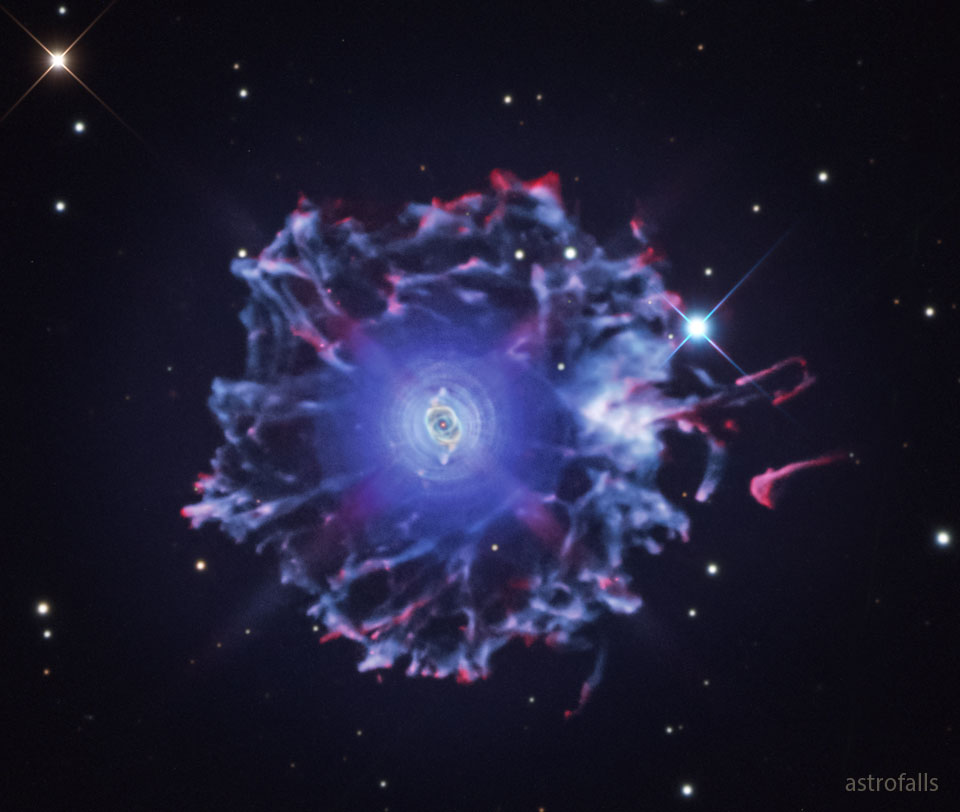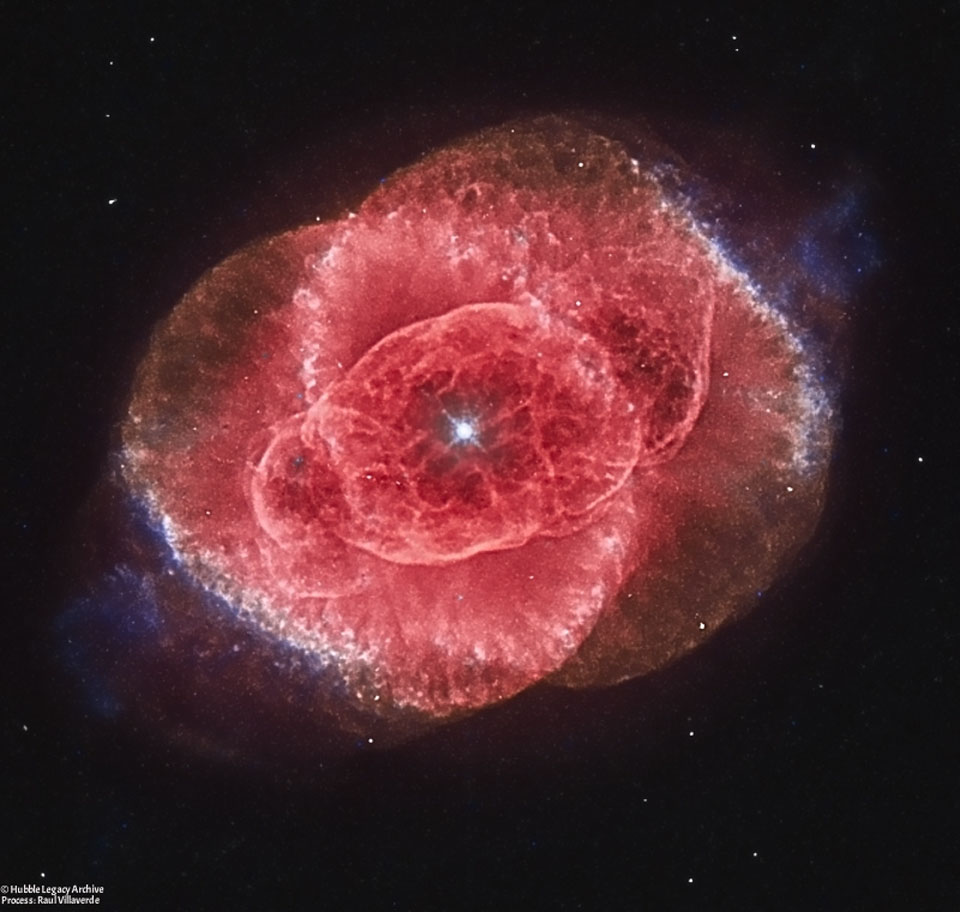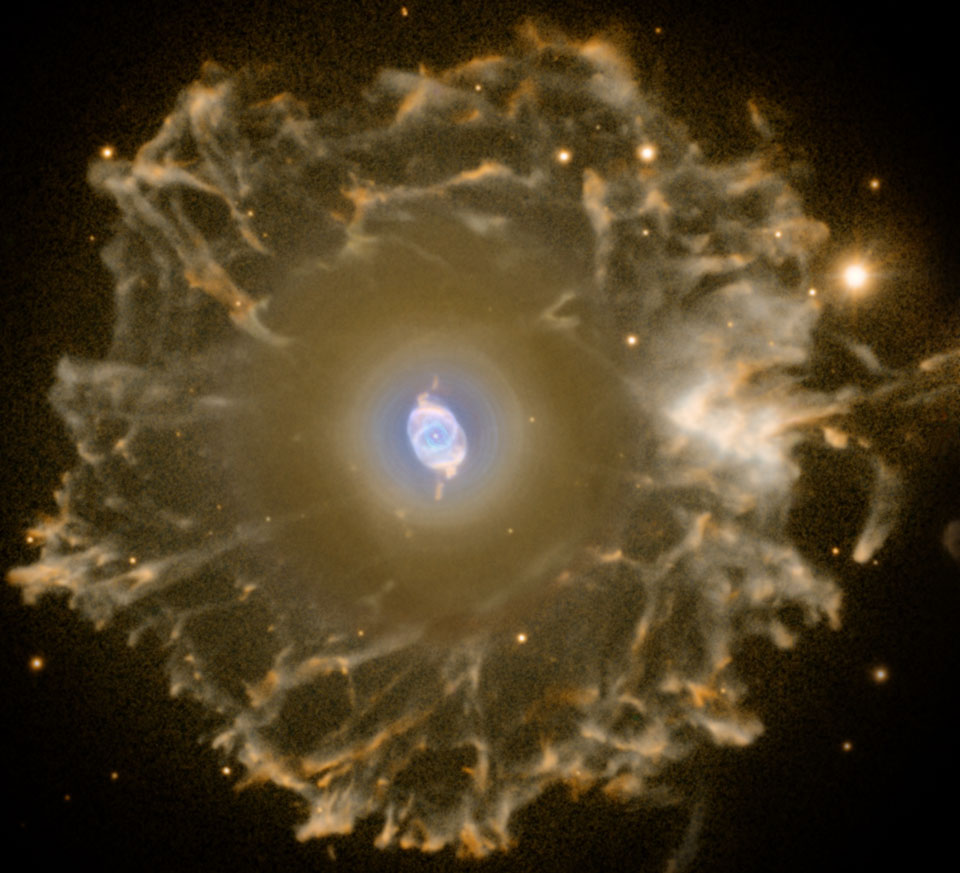猫眼星云的外晕
A dark starfield is dominated by a green nebula with intricate filaments all around. At the center is a bright glow surrounding a central star. Please see the explanation for more detailed information.
一片漆黑的星域被一片绿色星云所笼罩,周围环绕着错综复杂的细丝。星云中心是一团明亮的光芒,环绕着一颗中心恒星。更多更多详细信息,请参阅说明。





